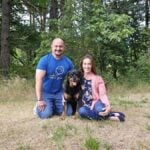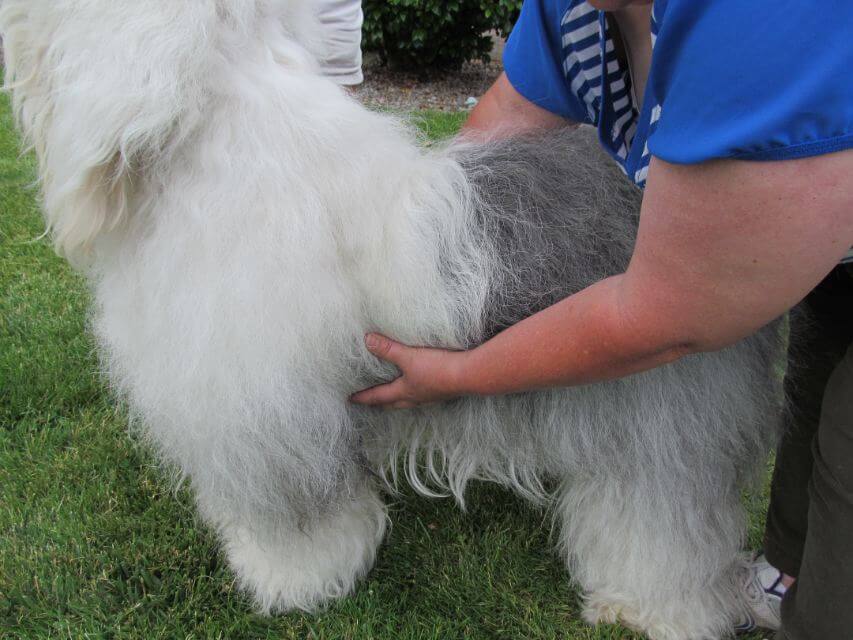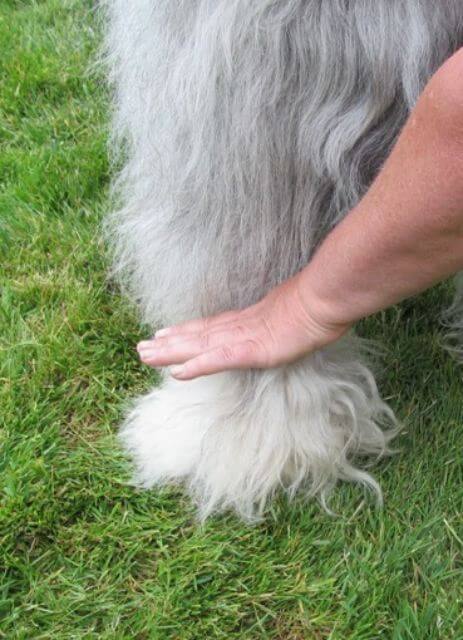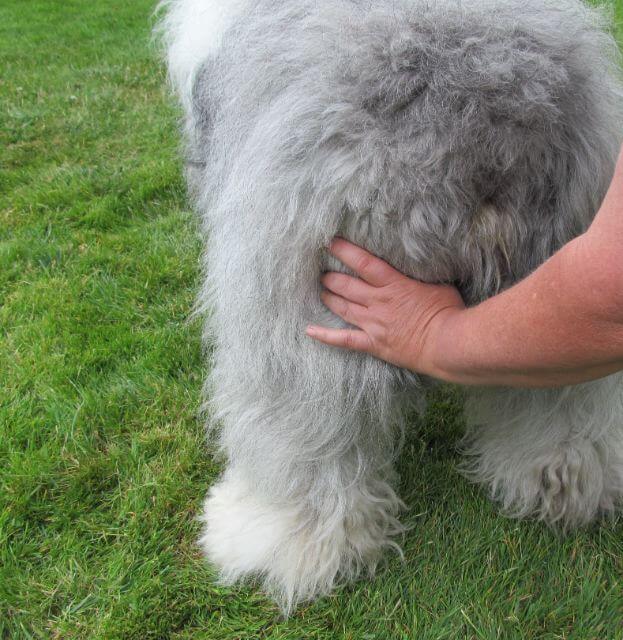


Home » Judging the Old English Sheepdog

This article was originally published in Showsight Magazine, July 2013 issue.
This breed has been called difficult to judge, but by identifying the key anatomical points, you will become a ‘Gold Standard Judge.’ Please read our Standard and judge the breed based solely upon that, without adding personal likes, dislikes, or anything not expressly described in the Standard. You are evaluating the future continuation of our breed. Match your general appearance evaluation with what your hands find under the coat. This is a thickset and muscular breed. Above all, be consistent in your examination of each entry. You are demonstrating your knowledge of our breed and its purpose.

As you judge the Old English Sheepdog, here are a few key points to keep in mind.
1. Approach confidently and place your hands under and around the muzzle. Look for truncation of a fairly long, strong, and square muzzle.
2. Check the bite. A truncated muzzle will show a bite that is straight across, not round.
3. Place the heel of one hand just behind the nose and move it toward the skull, checking for a well-defined stop, continuing to move toward the back of the skull, checking for an arch over the eye and the eye color.
4. Check all the dimensions of the skull (capacious, width, length, and depth combined) and check the ear for size and placement.

5. Move your hands to the neck (fairly long and gracefully arched).
6. Examine the shoulders, upper arms, points of shoulders (joining of scapula and humerus), and forelegs.
7. Our standard describes the feet and pads; please examine them.
8. Run your hands over the thickset body. This is vital to the breed.

9. Place the heel of one hand on the withers and move it toward the rump, feeling for the ‘very stout and gently arched loin.” Please pay attention to this feature as it is distinctive to the breed. The dog will stand higher at the loin than at the withers. (Not a case of more is better, slightly higher is just fine.)
10. Move your hands over the rump and check for muscular hindquarters. This includes the thighs.
11. Examine the well let down hocks.
12. Check to see if the dog is pear-shaped, wider at the rump than the shoulders.

13. Run some of the coat between your thumb and fingers and check for correct hard texture with a waterproof undercoat. Please give your full attention to the description of trimming. (Only feet and rear may be trimmed for cleanliness.)
14. Evaluate the gait. When trotting, movement can best be determined if the dog is shown on a loose lead at a moderate speed. Good reach and drive, MAY amble or pace at a slower speed. It is not required that a dog move around the ring at either an amble or pace. Markings are not to be considered. But, markings may distort your perception of the actual dimensions of the dog. Check for practically square by comparing the distance from the point of shoulder to the ischium against that of the withers to the ground. It is impossible to judge this breed correctly without going about it in a businesslike manner of examination to find the key points mentioned above.

Please do the breed the honor of not petting the top of the dog and passing judgment based upon the picture it presents. By using your hands correctly, you will tell the exhibitors and spectators that you found the dog under the coat. Exhibitors do not complain about Judges messing up their grooming, but they do complain about not getting an all-over examination, so dig deep. Please consider only the dog and not the handling ability of the exhibitor.
